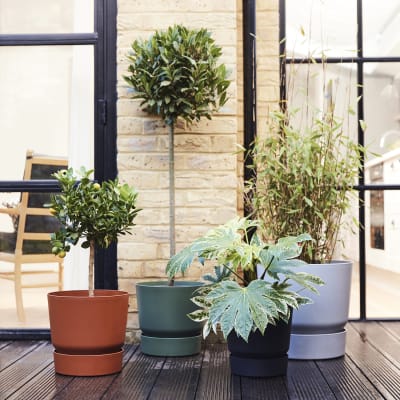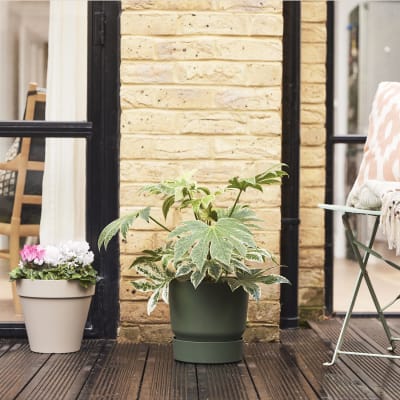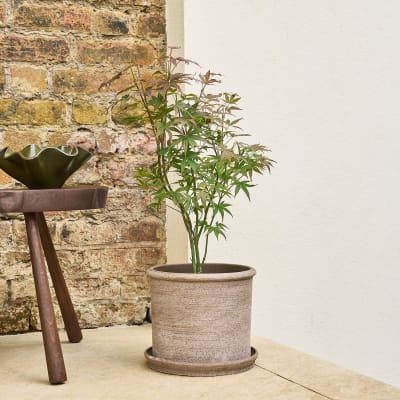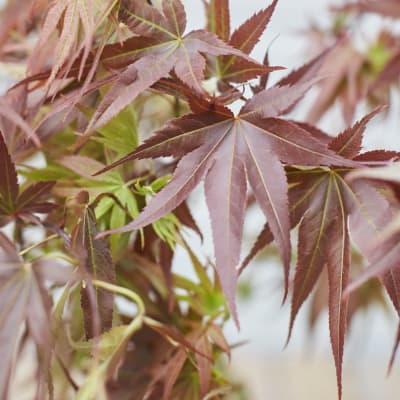

From £25.00


From £25.00
Out of stock
See optionsIf you’re an urban gardener, you’ll get familiar with potting up your plants quite quickly. Chances are you won’t have flowerbeds to fill with plants, and patios and roof terraces can be transformed by pots in plants. Plus, when you move, you can take your plants with you.
While those blessed with gardens may think container gardening is restrictive, it does have its benefits: you can move your plants around when the weather gets very cold, windy or overly hot. And moving pots to sheltered conditions means you can grow plants that wouldn’t usually put up with the British weather.
But containers do need more attention when it comes to watering. Avoid root rot by planting in containers with holes and on hot or windy days, check your plants’ soil to make sure they haven’t dried out.
Next up: compost. A benefit of container planting is that you can put any potting soil you want into your containers rather than dealing with the particular soil mix that you’ve inherited in your garden. While most plants will be fine with a standard multipurpose compost, it’s important to check if your plant prefers acid or alkaline soil.
An ericaceous mix is suited to acid-loving plants, such as our red and green Ace, Bella, and our blue Gia. If these plants are grown in a standard soil they will often develop yellow leaves, won’t flower well and will eventually die. A standard outdoor compost will keep most other plants happy.
As always, check your plant’s product page on the Patch website to see whether it would like an acidic soil.
If you’re putting more than one plant in a container, it’s important to make sure they like the same conditions: keep shade-loving plants together and in a different pot to sun-lovers, for instance, and those that prefer drier soil in a separate camp to those who like things moist.
Planting up a container is pretty simple. Once you’ve made sure your container already has drainage holes, add a layer of drainage material to the bottom. Crocks (broken bits of terracotta pots), gravel or even chunks of polystyrene work well.
Fill soil to a level that will lift the root ball of the plant so that its top sits just below the lip of the container.
You can add some moisture retaining crystals at this point - you can find out more about these in our watering section.
Next remove your plants from their plastic nursery pots, loosen the roots a little, and pop them into the soil. Fill in the soil around the plants and water them into place, and you’re good to go.


From £6.00
Out of stock
See options

From £30.00
Out of stock
See options
Free standard delivery on orders over £50
Need to get in touch?
Just use the help widget to send a message to the team.
Customer service opening hours:
Monday to Sunday 9am-8pm
Live chat is available 10am-5pm Monday to Friday
Secure payment - our systems are protected with bank-grade security. Your payment is safe with us.
We work directly with over 40 specialist growers to bring you the best quality plants
If you need advice, just get in touch - we’ll be your personal plant gurus as long as you need us. If something’s up, tell us within 30 days of delivery — we’ll sort it.
We usecookiesto improve your experience on our site.